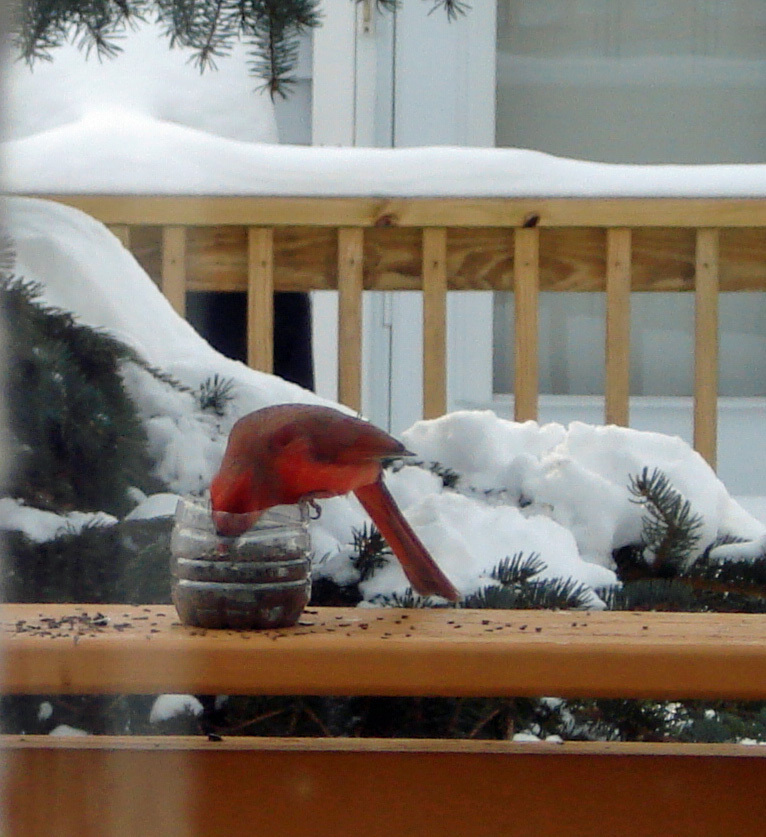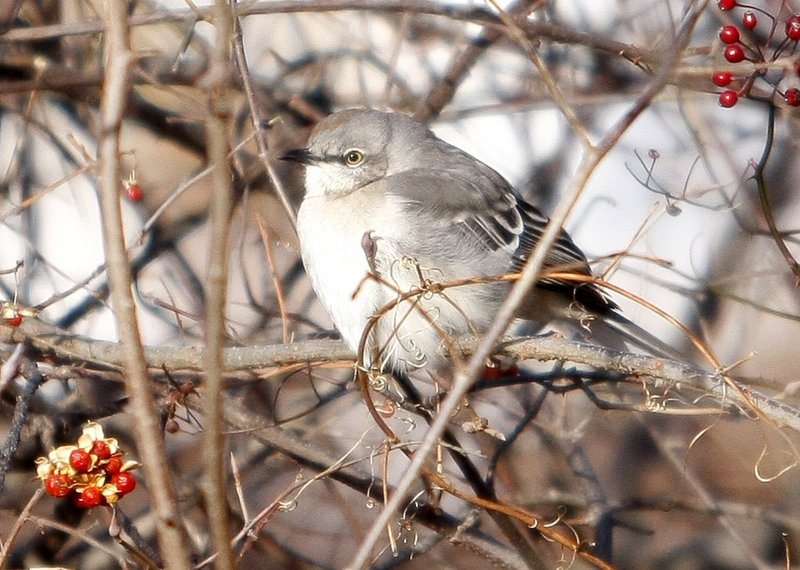Volunteers carried out the National Audubon Society’s annual Christmas Bird Count from Dec. 14 to Jan. 5. As is my custom, I will devote a couple of columns to highlights of the counts in Maine. Today we will consider some representative inland counts.
Let’s start with the Misery Township count, held in the vicinity of the Forks, south of Jackman. This count usually has the most severe winter conditions of any in Maine and the lowest species diversity. That pattern held this year, with only 18 species tallied.
However, the quality of those birds was high. Sixteen gray jays were found, almost outnumbering the 19 blue jays on the count. One intrepid mourning dove was found and a single ruffed grouse.
Red-breasted nuthatches outnumbered white-breasted nuthatches, 31 to 5. This result was not unexpected, as red-breasted nuthatches prefer the coniferous habitat that dominates this region.
So far this winter, relatively few of the northern finches have moved south into New England. The only ones in the Misery Township count were 19 pine grosbeaks and 44 common redpolls.
The Waterville count produced 56 species. Most still water was frozen over, but the Kennebec River and some tributaries produced nine species of waterfowl, including an American wigeon, four ring-necked ducks and a Barrow’s goldeneye. An American coot was the first ever reported for the Waterville count.
An American kestrel, five American robins, a Savannah sparrow, a Carolina wren, three brown-headed cowbirds and two common grackles were lingering in central Maine later than usual. Counters found 63 common redpolls and three pine siskins. A red-bellied woodpecker was a nice find.
A mere 30 miles west of Waterville, the Farmington count usually produces fewer species than the Waterville or Augusta counts. The 30 miles results in a slight but significant change in the severity of the winter for the Farmington area. This year, 37 species were counted.
With all the water frozen over, no waterfowl were found in the Farmington count. Lingering individuals included two American robins, three rusty blackbirds, one common grackle and most surprisingly, one northern flicker.
The count of 146 common redpolls was a nice but not surprising total; Farmington regularly is a stronghold of redpolls. Thirty-eight Bohemian waxwings made a nice addition to the count.
The Bangor count produced 54 species. Nine species of waterfowl were impressive, with the highlights being a wood duck and seven red-breasted mergansers.
Perhaps even more impressive were six species of diurnal raptors, including an osprey, a merlin and a peregrine falcon among the more expected bald eagles, red-tailed hawks and Cooper’s hawks.
Since ospreys are absolutely dependent on open water to fish, we can presume that this daring osprey has moved on or perished now that winter has a firm hold on our state.
Species that were seemingly overstaying their welcome included a northern flicker, an eastern bluebird and nine northern mockingbirds.
Bohemian waxwings were well represented, with 189 of these crested beauties counted.
Eighty-three northern cardinals made for an impressive total.
Six species of finches were found, including five pine grosbeaks, eight purple finches (scarce this winter in Maine), 186 common redpolls and 10 pine siskins.
Just 8 miles to the north, the Orono-Old Town count yielded just 43 species. Nothing on the list jumps out to me as unusual, although the 130 wild turkeys and three gray jays were nice totals for this area.
Moving to the south, the Lewiston-Auburn count resulted in a final tally of 52 species. Without a doubt, the highlight of the count was a lark sparrow.
The seven species of waterfowl included an American wigeon and 40 greater scaup. Four common loons and a pied-billed grebe were excellent finds for this time of year in inland waters.
The L/A counters hit the trifecta with the accipiters: one sharp-shinned hawk, two Cooper’s hawks and a northern goshawk. Half-hardy species included 19 American robins, five northern mockingbirds and three rusty blackbirds.
Two cedar waxwings were found among the 250 Bohemian waxwings.
Fifty common redpolls and two pine siskins were good discoveries.
Finally, the Sweden count produced 32 species. Bohemian waxwings were scarce, with 11 found. A single house finch was counted along with 88 American goldfinches and 102 common redpolls.
Fifteen crossbills were found but could not be identified to species (either red crossbills or white-winged crossbills).
This winter so far is shaping up as a poor crossbill winter, so these 15 birds were excellent finds.
Herb Wilson teaches ornithology and other biology courses at Colby College. He welcomes reader comments and questions at:
whwilson@colby.edu
Send questions/comments to the editors.




Success. Please wait for the page to reload. If the page does not reload within 5 seconds, please refresh the page.
Enter your email and password to access comments.
Hi, to comment on stories you must . This profile is in addition to your subscription and website login.
Already have a commenting profile? .
Invalid username/password.
Please check your email to confirm and complete your registration.
Only subscribers are eligible to post comments. Please subscribe or login first for digital access. Here’s why.
Use the form below to reset your password. When you've submitted your account email, we will send an email with a reset code.